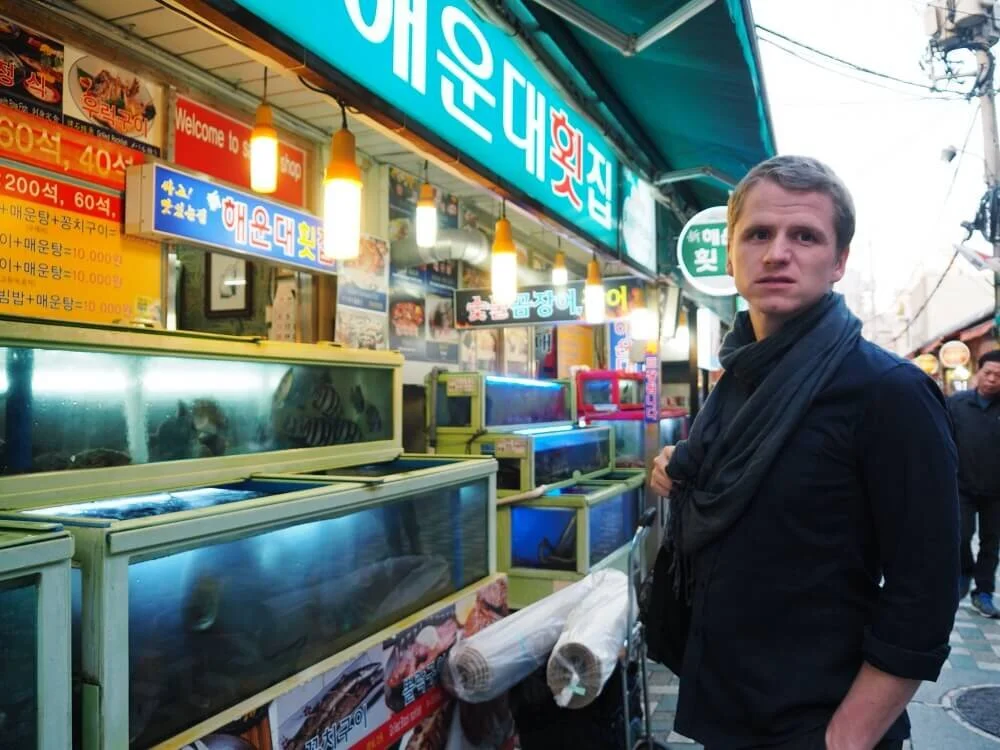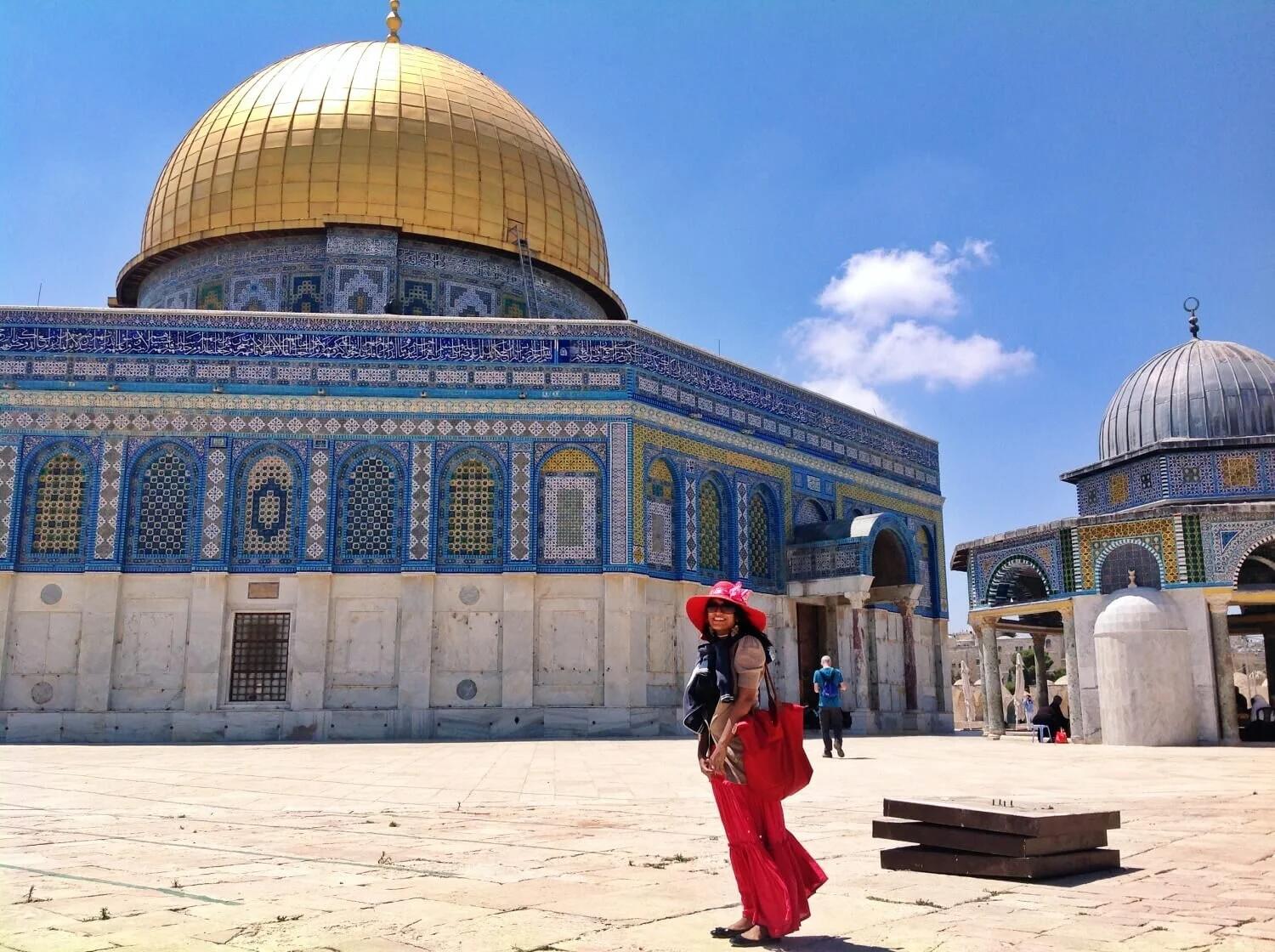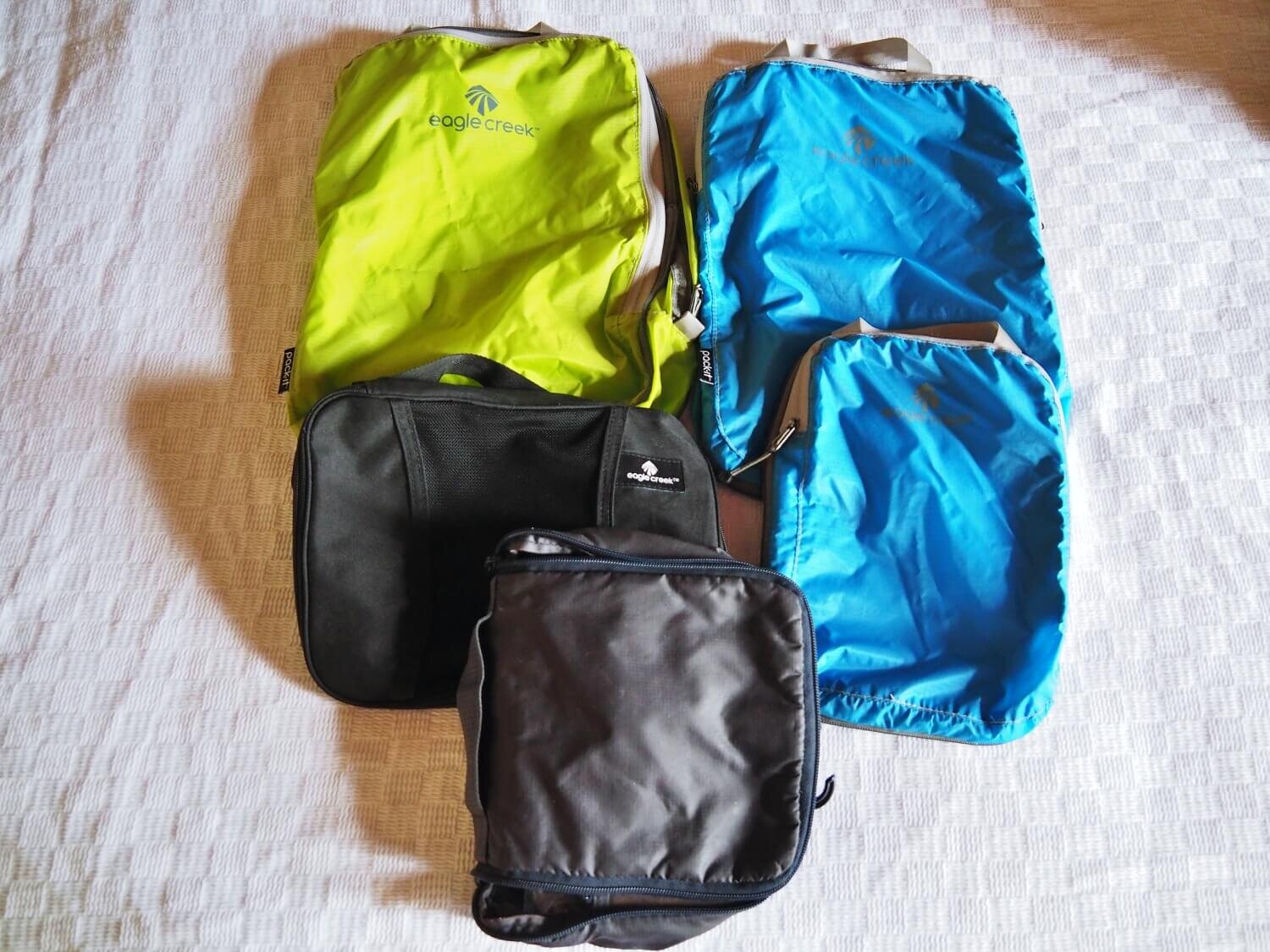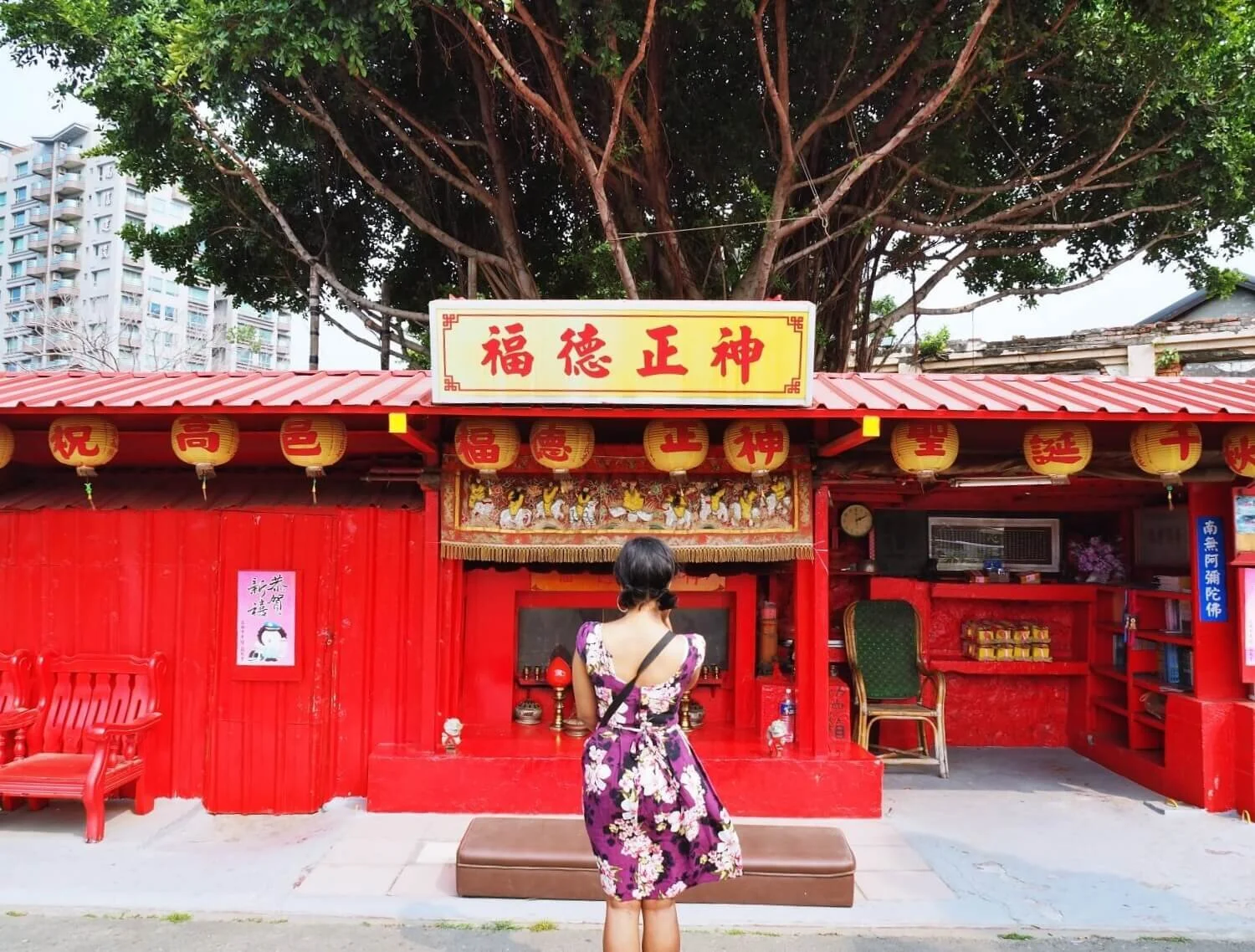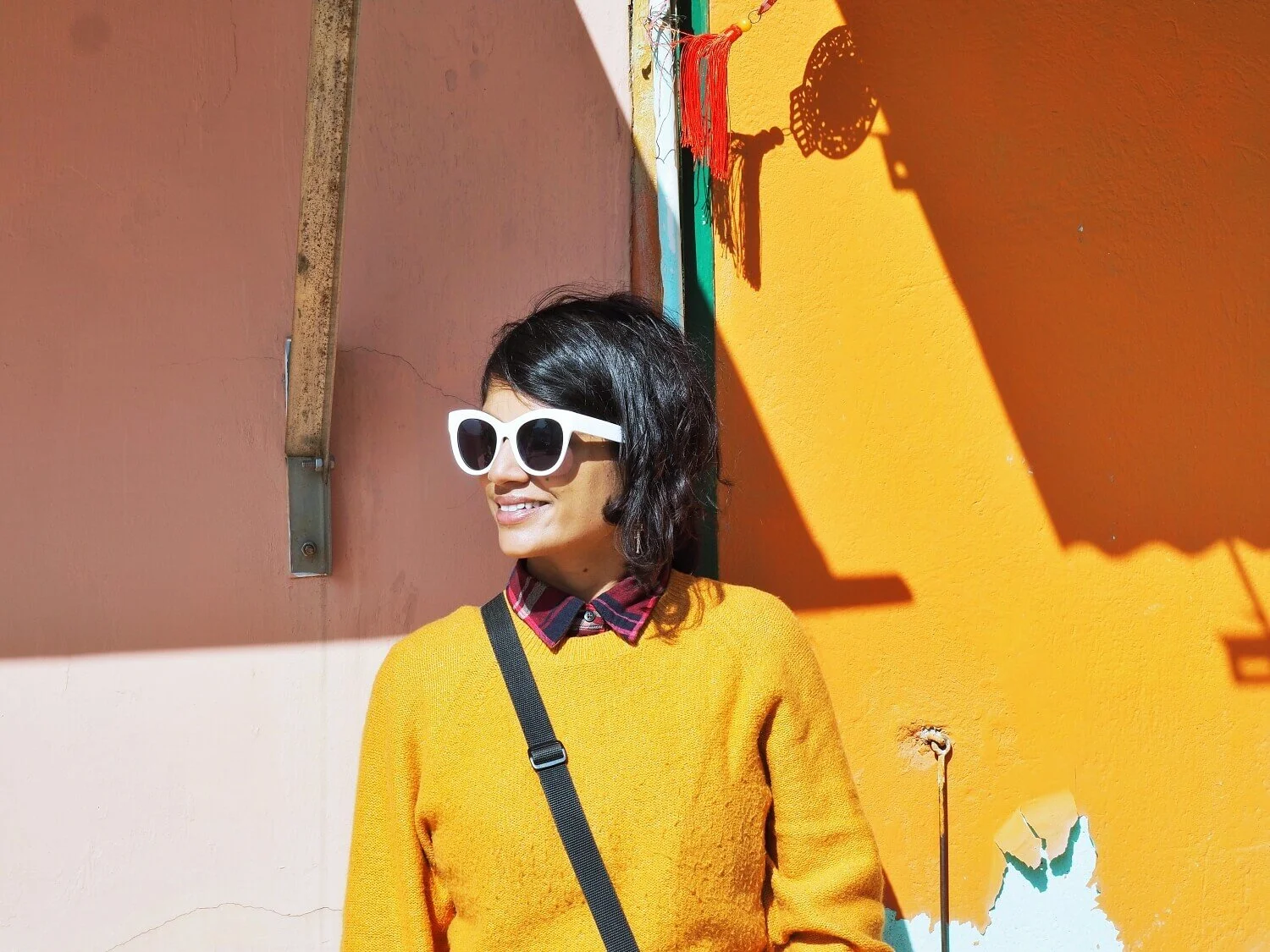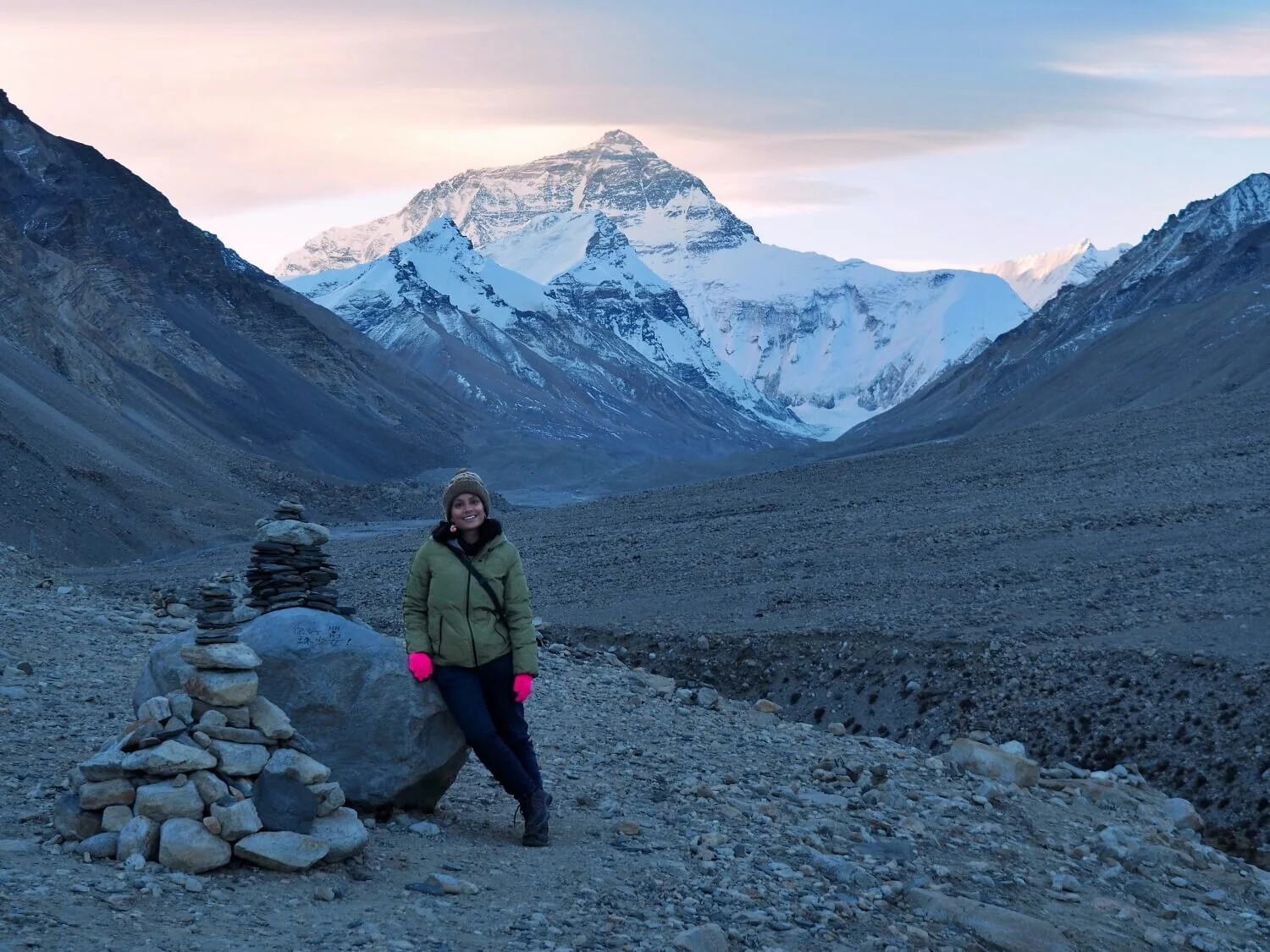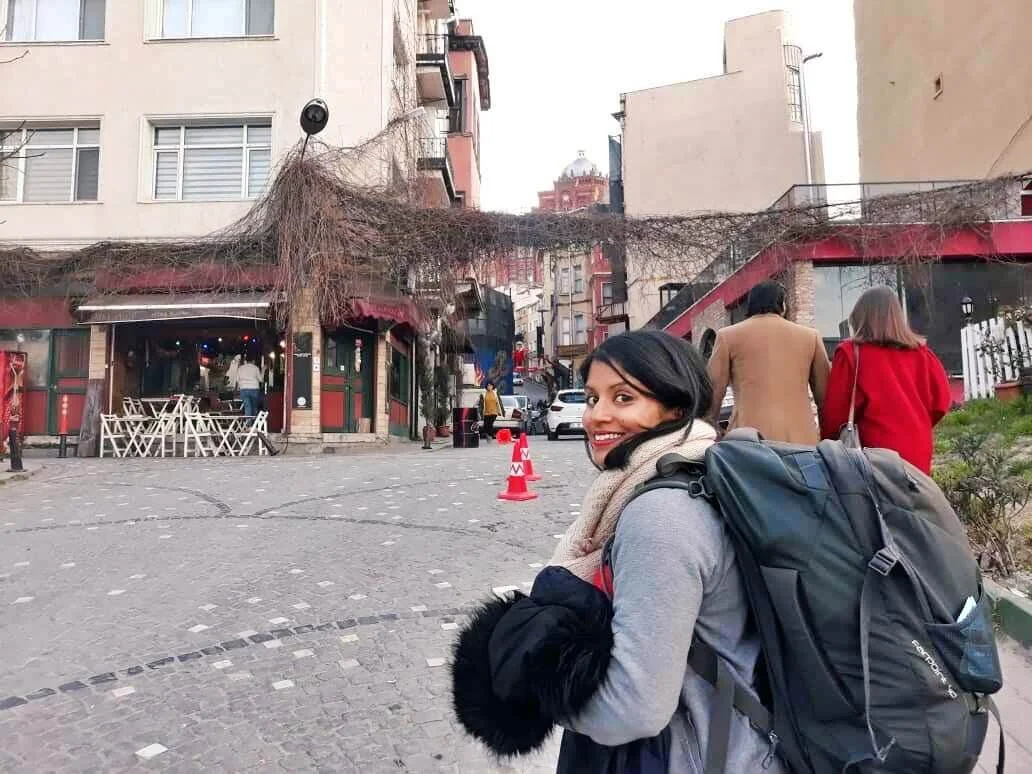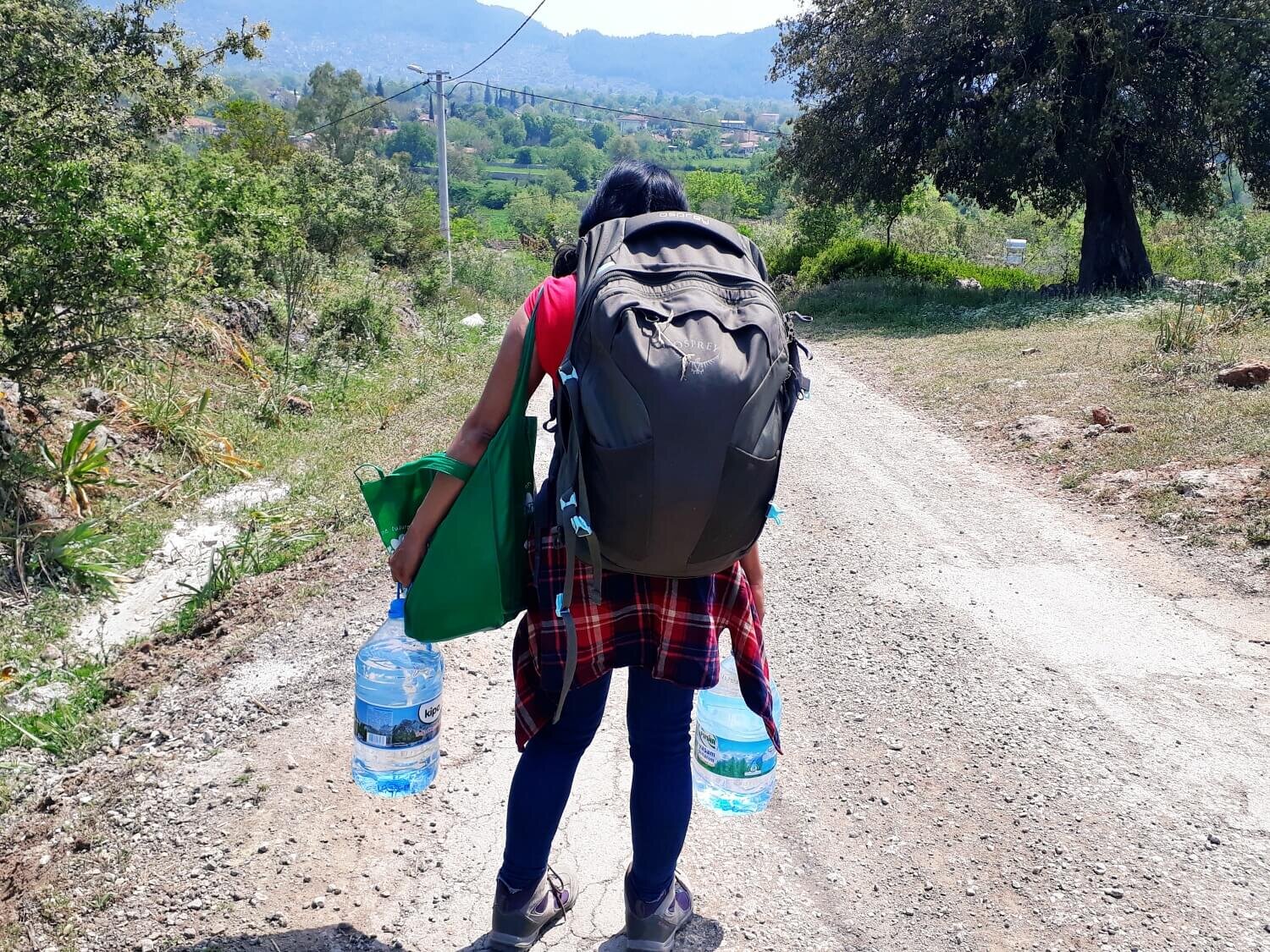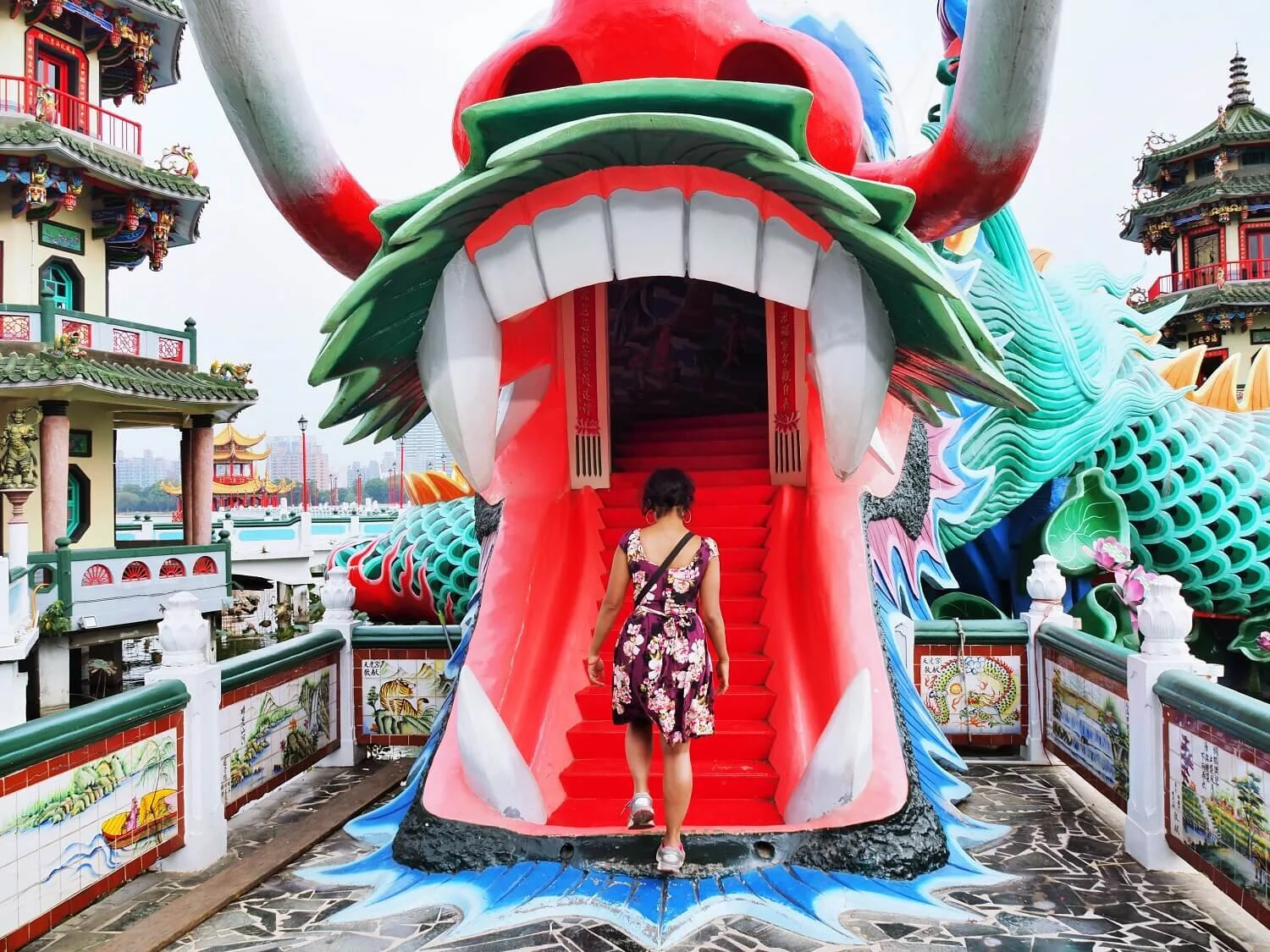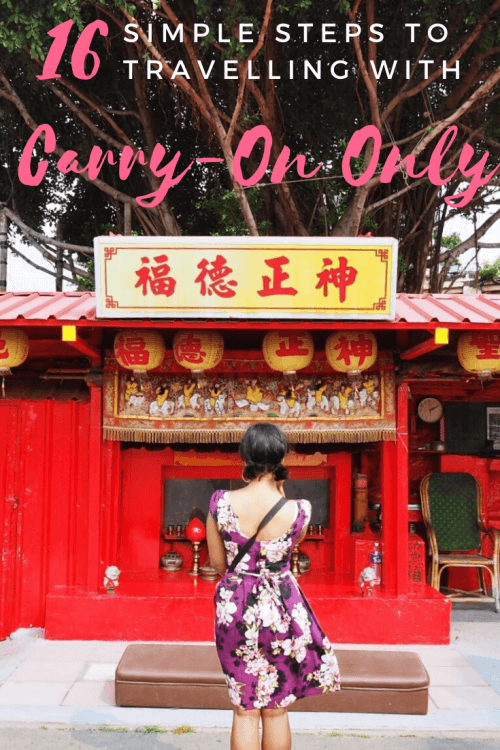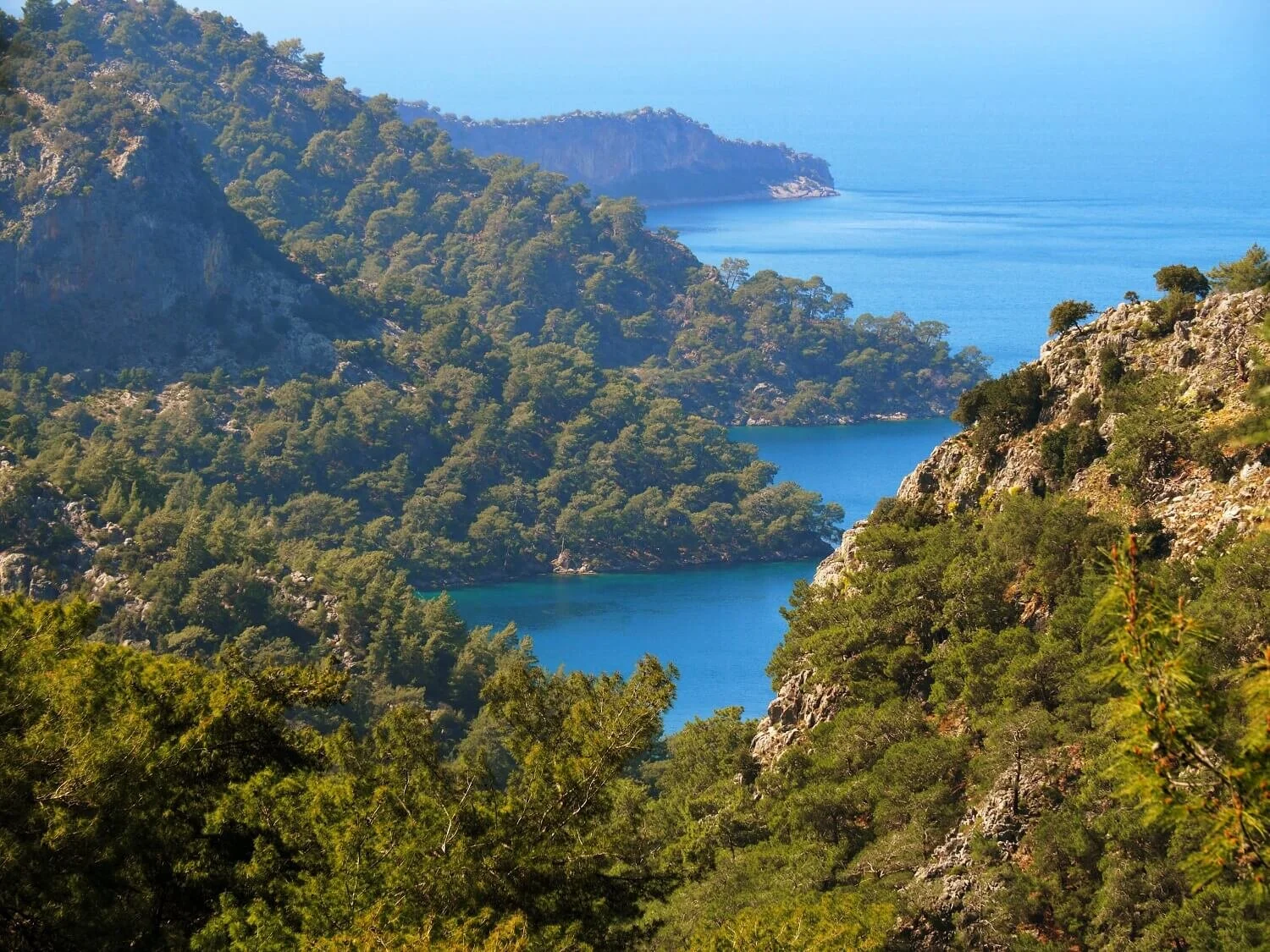16 Simple Steps to Travelling With Carry-On Only
A complete guide on how to travel with carry-on only, whether its just for a short trip or for long term travel.
Hurray transparency! This post contains affiliate links for products that we use and love. For more information see our disclosure.
I never thought I would say this: I have lived out of a carry-on backpack for the last three years.
And surprisingly, I love it and wouldn’t have it any other way.
We started travelling with carry-on only when we became digital nomads in 2017. I was basically keen to save us some serious cash monies and I realised that if we were going to fulfil our dream of travelling long term, we would need to cut unnecessary costs where we could.
So I downloaded a travel budgeting app, worked out how we could save on rent by house sitting and then realised that we could also save a ton of money by travelling with carry-on only, especially on budget airlines in Asia who would whack on a hefty charge for checked luggage.
There was a barrier though: Vincent wasn’t entirely sure that I could do it.
“YOU’RE GOING TO TRAVEL WITH JUST ONE BAG?!”
Over-packers Anonymous
It’s true, I was once the world’s worst over-packer. This bad habit started at a young age, probably circa 1995, when my dad asked us to pack light for a 6-week family holiday to Sri Lanka and I took this to mean ‘pack everything you own’.
The importance of his instruction only became clear when the train to Kandy arrived at the wrong platform at Colombo's Fort Railway station and my dad had to heave all our luggage up and down the stairs while I just watched, my mouth agape. Why was he so angry?
I managed to pack lighter on a trip to Jordan and Israel but I still didn’t pack the right things: hence having to wear a jacket as a scarf at the Al Aqsa Mosque.
The problem was that I always felt there wasn’t anything I could bear to leave behind so I would just take it all and then maybe wear a quarter of it.
Two weeks in Turkey? My suitcase was 15kg and heaving with tops, dresses, multiple pairs of sandals, makeup and jewellery. 3 months in the US? Two suitcases that I couldn’t actually physically carry and that were bursting at the seams. I also ended up having to drag them across Cincinnati airport to check them in for a domestic flight to Tennessee while other passengers looked at me like I was crazy.
These days, I am a totally different person. I’ve travelled with just my carry-on backpack for three years and honestly, I don’t miss any of the clothes, jewellery or ‘other items’ I could have taken. If anything, having a more minimalist approach to packing has made my life 10 times easier.
Why Travel With Carry-On Only?
It’s a whole lot simpler. Do you really need all that crap when you travel? Hair straighteners? Five pairs of shoes? A sh*t ton of makeup? We’ve all been in that situation where we pack a whole life’s worth of clothing for a holiday and then just end up wearing our favourite items over and over again. (And in the past I would also end up complaining that nothing looked good, despite having bought my whole wardrobe with me).
Having a more minimalist approach to travel is actually quite liberating: you realise very quickly that you don’t actually need that much stuff. And as a bonus, getting ready to go anywhere is now a piece of cake because you don’t have that much stuff to choose from. And packing? You can be done within 15 minutes.
Don’t I look relaxed? That’s because I can pack in 15 minutes.
Less airport stress. Before living the ‘bag life’ the most stressful part of travel for us was waiting for our bags to reappear on the carousel when we arrived at our destination. We would usually spend the whole flight worrying about our luggage being lost. Travelling with carry-on only completely erases this: we know where our luggage is all the time.
It also makes flying easier in general: if we check-in online, we can completely avoid check-in desk queues and then when we arrive we can head straight out of the airport, past all the people looking sadly at the baggage carousel and just get started with the holiday fun. Win-win all around.
The less time spent hanging around here, the better: travelling carry-on only makes this possible.
Saving cash monies. We save a ton of money in airline fees, especially when we are flying with low-cost airlines such as Air Asia, who tend to charge for everything, including your seat and in-flight meals. Baggage fees for Air Asia alone start at $15 per bag and go up to almost $40 on some flights! I’d rather keep that in my wallet and splurge on travel experiences instead, thanks.
Vincent doesn’t want to pay for checked luggage - even with fake dollar bills.
Easier to keep an eye on. Worried about losing things or your stuff being stolen when you travel? The carry-on travel life helps to reduce these concerns quite a bit. We are usually able to keep our bags right near us even on the most crowded buses and trains so we know where our stuff is at all times. If we had lots of cases and bags to manage this would be a lot harder.
Moving about is a breeze. The only reason we didn’t miss a high-speed train in Taipei was because we were able to run to the platform with our backpacks on, something that wouldn’t have been possible if we were dragging huge suitcases behind us. We both prefer travelling by public transport and it is so much easier to do this with just carry-on luggage.
Taking crowded public transport in an unfamiliar country can sometimes be a stressful experience in itself, without having to worry about lugging your massive bags onto the bus/train/metro. With just one bag each, we can instead focus on how to get to our next destination. And when we get dropped off in a new town or city, we can also easily walk around looking for accommodation. Bonus!
16 Simple Steps to Travelling With Carry-On Only
The Type of Carry-On Bag You Choose is Important
1) Size matters
Get your minds out of the gutter - I am talking about the size of your bag here! If this is going to work, you need to make sure that you actually choose carry on size luggage. ideally, you want something that isn’t too heavy (the heavier the bag, the less stuff you can actually pack), spacious and for longterm travellers, durable.
The dimensions of carry-on luggage for most airlines is 56cm x 36cm x 23 (22 x 14 x 9 inches), although some airlines are stingier (Iike Ryan Air and Wizz Air) and only allow you to take smaller bags. It’s always worth checking your airline's luggage policy and also what the penalty is if your bag ends up being overweight (some of the excess baggage charges are crazy, especially if they make you check your luggage at the gate).
We opted for backpacks over suitcases because they are more practical for us and fit with our travel style. We take a lot of public transport so it’s useful for our hands to be free to hold onto handrails on jerky bus rides (instead of trying to keep control of a runaway suitcase) and we are sometimes late for things (as shown above) and need to run or at least be able to move with speed.
Both of our backpacks have a capacity of 40 litres and fit all of our clothes, toiletries and electricals. I decided to buy the Osprey Fairview 40, a backpack designed for women, that has a lighter frame. Vincent has been using the Osprey Farpoint 40, which is the men’s version.
We’ve now had these bags for three years and can say that they are sturdy, comfortable and pack in a whole lot of stuff. The great thing about Osprey bags is that they also offer a lifetime warranty and they will repair any damage or defect in your bag free of charge. If they can’t fix it, they will happily replace it!
Backpacks aren’t for everyone, so if you prefer to be living the suitcase life you’ll be glad to know that there are plenty of good options. We’d recommend a soft case over a hard shell, as this will be lighter and it can also be crammed into smaller spaces.
If you are going to be travelling long term and to places with lots of cobbled streets or dirt tracks we’d also suggest buying something durable with robust wheels. There’s an excellent write up of the best carry on luggage here.
We also each have an ultra-light packable day pack: we use these to store our laptops and other valuable items when we are forced to put our main bags in the luggage hold (this can sometimes happen on buses, especially in Laos).
Carrying our day pack on a trip to Pinara in Turkey.
Vincent with his backpack and another bag at the border crossing between Laos and Vietnam: on Laos bus journeys you have to put your backpack in the hold (unless they are really tiny) so we took our valuables out, wrapped them in our day packs and then put them in a bag for life. Extra, but hey, they are our VALUABLES for a reason.
Most airlines also allow you to take a small handbag, laptop bag or another personal item as well as your cabin bag: sometimes I carry my camera bag or laptop bag in my hand to make my hand luggage lighter, in case it gets weighed. (More on this later).
Think About How You Pack As Well As What You Pack
2) Prioritise
When you travel with hand luggage only you need to prioritise. Start off by thinking of all the items that you can’t live without - this basically means the things that will totally ruin your trip if you forget them. Some obvious ones are your passport, travel documents, credit cards, essential medication, phone, camera and chargers.
Snapping away in Lhasa in Tibet: my camera is one of my essential items and I take it with me everywhere.
If you are a digital nomad and travelling long term, then you will need to prioritise packing your laptop, chargers, power banks and other electrical items that enable you to continue working on the road. If you still want to put your face on when you are travelling (as I sometimes do) then a small makeup bag with essentials might be something you want to pack.
Vincent packs a roll of fine-point drawing pens, pencils and pencil leads as he sometimes does drawing commissions and design work when we are on the road. If it is something that you know you will definitely use, make space for it first and then you can see how much room you have left for everything else.
3) The enemy to packing light? Bringing things “just in case”.
If you are bringing something “just in case” it shouldn’t be in the case. Everything in your bag needs to have a purpose. Make a list of what you are taking when you are packing and ask yourself why you are bringing it and whether it is essential. Eliminate anything that falls into the ‘just in case” category because trust me, you are just going to end up lugging that useless sh*t around.
Before we decided to become digital nomads we read a whole load of articles about the ‘essentials’ required for long term travel and honestly, we didn’t end up packing many of them. How we’ve managed to survive the last three years without carrying our own washing line or sleeping bag, I don’t know. I am travelling indefinitely not becoming Ray Mears!
On the other hand, we make space for our bluetooth speaker because we love playing music and watching films and TV series with really good sound. (Remember what I said about priorities?!)
Again, remember that you can always buy most things that you need on the road.
4) Packing cubes are your friend
Our Eagle Creek packing cubes and a Uniqlo toiletries holder that helps us stay organised.
Carry-on only travel requires a little bit of organisation and this is where packing cubes come in. We use these packing cubes by Eagle Creek, which keeps our packing neat and ordered and saves us so much space.
Check out the packing cubes we use here plus other space saving solutions from Eagle Creek.
5) Roll your clothes
They see me rollin’, they hatin’...
An essential skill when packing carry-on only luggage. Rolling your clothes is a great way to save space and reduces the chances of your clothes getting all creased. Rolling also allows you to maximise the space in packing cubes, meaning that you end up being able to fit in a few more items.
6) Pack enough clothing for a week
Hear me out y'all. Travelling light means that you can’t take every item of clothing and shoes that you own, so you need to be strategic.
This is where the one-week rule comes in: whether you are travelling for a week, a month, a year or forever, you only need to pack enough clothes for one week. And before you start to tell me that this is gross, that you need clean underwear, that travelling with carry-on only shouldn’t mean being a scruff, I have a magic word for you: LAUNDRY.
All the clothes that I packed for a trip to China in the winter.
We usually rent Airbnb apartments that have a washing machine and we’re also not above washing things in the sink if it comes to that. I’ve washed plenty of knickers, t-shirts and shorts in a sink using hotel freebies - if you are super organised, you can even bring a small zip-lock bag of washing powder with you.
If the idea of washing your own keks by hand fills you with horror, never fear: most hostels and hotels that we have stayed in throughout Asia either had a cheap self-service laundry room or a laundry service. In Laos for instance, we paid for laundry service at most hotels which started at 0.88p/$1 per kilo and in China, the self-service washing machines usually cost £1/$1.30 for a load.
So basically there’s no excuse to be dirty and smelly on the road.
7) Pack outfits vs random individual items of clothing
When packing for carry-on only life, you need to think. Don’t just mindlessly pack a whole load of random stuff because it will look awful together and you won’t want to wear any of it.
First think about where you are going: for hot countries, breathable, lightweight and quick-drying items are best - these also tend to pack up small. If you are visiting somewhere in winter, think about layering instead of just packing a load of bulky jumpers. This will keep you warmer and also help you to pack light.
Next, think about pieces that can be worn together and that you can basically mix and match to create different looks that you are happy with. For those who know about fashun, this is basically a capsule wardrobe.
As an example In South East Asia I had four summer dresses, all made of lightweight fabric, my gym kit (one pair of leggings, a t-shirt and two sports bras), one pair of shorts, three or four T-shirts, one pair of jeans and one pair of lightweight trousers, a pashmina and a sarong.
In China, which we visited during the winter, I packed a pair of jeans, two jumpers, a flannel shirt, two T-Shirts, three thermal tops, some fleece lined trousers and a pair of thermal long johns.
I also had one pair of ballet flats, a pair of flip flops and one pair of trainers. For China, I left my flip flops behind and bought an additional pair of hiking shoes which I wore on most days.
If I do start to feel frumpy because I am wearing the same clothes over and over, I usually add in a pair of earrings (I am a jewellery fanatic and take a whole load of pairs with me) and put on a bit of makeup.
8) Don’t bring it if you never normally wear it
Vincent pretty much always wears black or blue shirts. Like always.
Another tip is to only bring clothing you know you will actually wear. Don’t bring that top that you have owned for like FOREVER but have never actually worn, because you are just as likely not to wear it on this trip. There’s probably a reason that you don’t wear it (bad fit, unflattering cut or colour) and this isn’t going to magically change because you are on a holiday. Basically, if you don’t wear it, leave it at home.
9) If it creases, it ain’t the one
Ironing is the most boring job to ever exist and I certainly don’t want to be doing it on holiday. Make sure that the clothing you choose doesn’t wrinkle easily, so you don’t spend valuable holiday time ironing or worse, trying to find a decent iron.
I love this dress because I can fold it really small and it doesn’t crease. It’s also super comfortable when you are mucking around like this.
10) Pack solid toiletries or buy when you get there
The airline restrictions on liquids mean that you can only pack toiletries that are 100ml or less and all of them must fit into a one-litre clear plastic bag. Most airlines are pretty strict about this but the rules can change e.g.from Malaysia some airlines enforce this rule on international flights but not domestic ones.
Some airports also don’t mind if you have stuffed the plastic bag to the top and it won’t close, whilst others (like Stansted airport) are sticklers for the bag being completely sealed and will take your items off you if they don’t fit.
To get round this, try to pack solid toiletries instead. Choosing soap instead of shower gel, solid deodorant sticks, and even shampoo bars (which we love), will help and as a bonus, these solid items tend to last longer than their liquid counterparts.
To get round this, try to pack solid toiletries instead. Choosing soap instead of shower gel, solid deodorant sticks, and even shampoo bars (which we love), will help and as a bonus, these solid items tend to last longer than their liquid counterparts.
Solid toiletries like soap last longer and are more eco friendly too. Yay!
You can also always buy toiletries once you have arrived at your destination: shampoo, toothpaste, face wash and shower gel are super easy to find in most places and won’t break the bank.
If you have a product that you just can’t live without (e.g. I have sensitive eczema-prone skin which seems to rely on Aveeno 24-hour moisturising cream these days, but it really is amazing), pack as much of it as you can into 100ml travel size containers and then see whether you can buy more of it when you arrive. If you can find travel size samples of your fave products, take those too!
Read next: The Best Gifts for Outdoorsy Women - 40 Amazing Gift Ideas for Her!
If you wear contact lenses things can be a little more complicated. Some airports and airlines count contact lenses as part of the liquid allowance and expect to see these packed into the clear plastic bags, whilst others don’t.
I pack the lenses I am carrying into my backpack and only remove them if I am asked to, however I also make sure that they fit into a clear plastic bag if necessary.
It’s impossible to take a year’s worth of contact lenses with you on the road if you are travelling light, so I usually try and buy a few packs when I arrive somewhere and make them last longer by wearing my glasses some of the week.
I also switched from using tampons and sanitary towels to using a menstrual cup. I previously thought that this was something that only hippies and eco-warriors used (I know, very judgemental) but after trying it out, I really liked it.
I resent having to pay for sanitary products anyway (periods happens to girls and women every month and it’s not like we have a choice in the matter) and a menstrual cup actually saves a lot of money (and waste) in the long run. It’s also much more practical when you are travelling to remote areas - no one wants to be searching for tampons on the Tibetan plateau now do they?
11) Replace heavy items and see what hotels provide
You can’t carry all your favourite books with you so go electronic. We both have the Kindle app on our phones and download any books that we want to read when we are travelling. For avid readers who don’t want the distraction of Facebook/Whatsapp/the internet when reading, then invest in a Kindle or an e-reader.
We also don’t pack towels as we think they are bulky and take up too much space. Instead, we always make sure that we stay in places that at least provide towels - if I am unsure, I always check. In Taiwan, a lot of Airbnbs didn’t provide towels but some were willing to provide disposable ones when we asked.
12) Reduce your electronics
Our electronics are by far the heaviest items that we carry: we both have MacBook Pro laptops, chargers, portable back-up drives. I also have a camera and an iPad. These items are essential for us because we have both started to work online, teaching English to adults, doing freelance writing projects and working on this blog.
Back-up drives are a MUST if you are a blogger as like us, you probably have lots of photos, videos and work that you can't afford to lose. Click here to see prices for the 2TB back-up hard drive we use.
However, if you are going away for a short period and/or you don’t intend to work remotely, you could ditch all this stuff and make do with just your smartphone or an iPad. After all, travelling is supposed to be about getting away from it all, isn’t it?
We both have smartphones because we like to keep in contact with our friends and family all over the world. Our phones are also dual sim, which is useful when we want to put in a local sim card, which saves a lot of money compared with paying international roaming fees.
During our first two years, we travelled with the cables and plugs for both phones and laptops, but we realised this was a bit stupid (and heavy) so we’ve basically started to share these instead.
Whilst I do take photos with my smartphone, the quality of the pictures isn’t that great (probably because I have dropped it too many times and it is also pretty old). Therefore I also have an Olympus mirrorless camera that is lightweight and takes good quality photos for this blog and for social media. If unlike me, you’ve taken care of your phone and it’s fairly new, you can usually take fantastic photos with it and you won’t need a camera.
Check out the latest prices for the Olympus OMD-EM5 Mark II here.
13) Invest in smaller versions of heavy items
Carry-on only travel doesn’t mean that you have to go without a coat or warm clothing: you just need to buy compact versions of these items. Travel and outdoor shops often sell lightweight alternatives to heavy jackets and coats.
i was so glad I bought this North Face windbreaker with me to Mount Bromo. (We bought our hats from Daiso in Malaysia for less than £1 each).
For instance, the down jacket that I bought for our trip to China, rolled up really small into the size of a grapefruit. I also have a lightweight Northface windbreaker that is easily compressed but kept me warm on a trip to Mount Bromo in Indonesia. In terms of shoes, my ballet flats from Butterfly Twists are foldable, look smart and don’t take up much space.
Update: Unfortunately I have had to get rid of these after three years (sob!) as they got totally soaked in Laos and then stank. Sigh.
This down jacket kept me super warm at Mount Everest but also packed down really small.
I’ve also found that Unqilo fleeces and their Heat Tech Extra Warm thermals are really warm but don’t take up that much space in your bag.
Style it out
14) Wear your largest items when you are travelling
If you are concerned about the size and weight of your luggage, the simplest solution is to try and wear your bulkiest items on the plane. When we travelled to Turkey we wore our coats, hiking boots, jeans, jumpers, scarves and hats as some of these things were way too large and heavy to pack into our backpacks. Admittedly this was possible because we were travelling from the UK and the weather was pretty chilly already.
Our luggage for Turkey looked super neat because we were wearing a lot of our heaviest clothes.
You could possibly do this in a hot country, but be prepared to sweat to death and for people to look at you like you are crazy. When we travelled to China from Kuala Lumpur, we put all our layers on in the freezing airport (thank goodness for the air conditioning) and then rearranged our stuff again once we were airside.
If it is crazy hot and you don’t have the benefit of air conditioning, then your options are to wear as much as possible (you can tie things like jumpers around your waist) and then remove it once you are through the gate or just make sure all your clothes fit in your bag.
It’s also useful to wear clothing with a lot of pockets on travel days: I’ve packed loads of extra items into my coat pockets to free up space inside my bag and make it appear less bulky.
15) Act like your bag doesn’t weigh anything and be confident
If you’re worried that your bag is over the weight limit, it’s time to bring out those acting skills. Huffing and puffing and dragging your luggage around is definitely going to draw the attention of the eagle-eyed airline crew at the gate and land you with a baggage charge, so don’t do this.
We usually just wear our backpacks on one shoulder as we are boarding, to make it look like it weighs nothing. Sure, our shoulders are killing and we want to cry, but hey, it’s only for about 15 minutes. If I put my bag down, I also then make sure that when I pick it up I make it look like it’s as light as a feather. Hey, all that working out has to be for something.
None of this weighs anything. I am a MUSCLE BEAST! (Can I put it down now? Please?)
Shifting your bag on your shoulder so that it is squarely behind you and so that the gate attendant can’t see the width of your bag (just the shoulder strap and maybe the top) is also a useful trick. And remember, handing over your boarding pass and passport with a sunny smile will also go a long way too.
16) Queue behind people who are getting nailed for breaking the rules
Okay, so this is one for super desperate times. At some airports, the airline staff have started this horrible new process of checking the size of bags before you go through to immigration as well as checking again at the gate. What kind of hell is this?
An artist’s impression of walking into carry-on luggage checking hell.
We were pretty worried about getting checked as they seemed to be doing it to everyone until we watched a man with a mahooosive bag on his back, walk past the staff and flash his boarding card and ID - he seemed to time it just as another passenger was struggling with his luggage. As a man in front of us with a clearly overweight carry-on suitcase was getting his luggage forced into that god awful baggage-size-frame-tester apparatus we strolled past and did exactly the same thing. Phew. This works at gates too.
What happens if I have to visit the check-in desk?
Sometimes checking-in online isn’t possible and we have to visit the dreaded check-in desk. Whether your luggage gets weighed or not in this situation can really depend on the mood of the staff member, so if we suspect that we might get caught out we usually do one or more of the following:
Remove cameras and laptops from our bags and carry them in our hands, while we are checking in. Some airlines allow you to have an extra personal item that must fit under the seat in front of you: usually this is a laptop bag, handbag or a small daypack.
Quickly remove a few items at the check-in desk and leave them on the floor before putting our bags on the luggage belt. We’ve found that most staff don’t look over the top of the counter when they are checking you in.
Check-in separately. We’ve done this a few times - one of us stays behind with one bag and we empty out the other bag to meet the weight limit. I then go and check-in first and then when I return I repack my bag and take the heaviest items from Vincent’s bag while he goes to check-in. A bit stressful and cheeky I know, but it works. This is harder if you are travelling solo but if friends or family are coming to the airport to see you off, you can always leave your heaviest items with them and then repack your bags once you’ve checked in.
A smaller bag means a simpler travelling life. Hopefully some of these carry-on only tips are enough to get you started and you can put them into practice on your next adventure, whether it’s just for a weekend away or a whole year!
Do you have any packing tips for long-term travel? Do you travel carry-on only? Let us know in the comments!
Find more travel tips and useful travel resources here.
Looking for more travel inspiration? Click here to discover more of our favourite places around the world.
If you like this article Pin it!
Some of the links in this Travelling With Carry On Only guide are affiliate links.
That means that if you drop any ca$h monies on any products after clicking one of these links (i.e. make a purchase), we will earn a small commission at no extra cost to you. This enables us to MAKE IT RAIN, BABY, (nah just kidding, we actually use it to buy coffee which we drink whilst creating more useful and entertaining content like this).
Mog and Dog Travels is a participant in the Amazon Services LLC Associates Program. As an Amazon Associate I earn from qualifying purchases.
Don’t worry, we only link to products that we actually own or would buy for ourselves.

